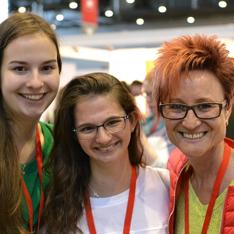File
Kacin A.1, Grapar Žargi T.1, Vauhnik R.1, Koder J.2, Drobnič M.3
1University of Ljubljana, Faculty of Health Sciences, Department of Physiotherapy, Ljubljana, Slovenia, 2University Medical Center Ljubljana, Department of Radiology, Ljubljana, Slovenia, 3University Medical Center Ljubljana, Department of Orthopedic Surgery, Ljubljana, Slovenia
Background: Factors predicting Quadriceps Femoris (QF) muscle atrophy during the early period after arthroscopic ACL reconstruction has not been extensively studied. Apart from limb unloading and reduced whole-body activity, arthrogenic muscle inhibition driven by pain, inflammation and swelling, as well as damage of joint proprioceptors has been shown to contribute to the development of postoperative QF atrophy and weakness. Although it is known that QF deconditioning is most common in the first 6-12 weeks post ACL reconstruction, the relative contribution of preoperative muscle mass and strength and rate of postoperative joint recovery to the development of QF deconditioning remains unknown. It is also equivocal whether muscle atrophy or arthrogenic muscle inhibition is a key determinant of postoperative QF weakness.
Purpose: To investigate factors most strongly associated with QF volume loss, which would allow for early identification of patients with the highest risk of atrophy during the initial recovery phase following ACL reconstruction and hence more effective individualisation of preoperative training programmes.
Methods: Mean changes in QF volume, MVIC torque and isometric endurance time were analysed in 25 patients prior to and at four (POST-4w) and twelve (POST-12w) weeks after surgery. Multivariable regression model of change in QF volume was made from preoperative QF volume deficit, MVIC torque and isometric endurance time combined with postoperative changes in knee extension ROM and mid-patellar girth. The contribution of QF atrophy to MVIC torque change was evaluated with univariate regression and MVIC torque to QF volume ratio at POST-12w only.
Results: QF volume and MVIC torque were reduced throughout the recovery period, whereas endurance time was decreased only at POST-4w. The regression model of QF volume change was significant (p 0.01) only at POST-4w, explaining 57% of its variation, where endurance time had a negative and knee extension ROM deficit a positive weight. Change in QF volume explained (p 0.05) 46% of the MVIC torque variation at POST-12w. Also, a significant change (p 0.05) in QF MVIC torque to volume ratio was observed at POST-12w.
Conclusion(s): Good prediction of QF atrophy in the first postoperative month was made from studied variables, with isometric endurance and knee extension ROM deficit being the most significant contributors. The atrophy explained larger part of QF muscle weakness, whereas factors contributing to the remaining portion need further research. The observed changes in volitional torque production for a given QF volume were less consistent in our patients than previously reported.
Implications: Our results suggest that for successful attenuation of postoperative QF weakness, physiotherapy should focus primarily on preoperative increase in QF endurance and rapid restoration of end-range of knee extension. The capacity for volitional activation of QF muscle mass varies profoundly between patients in the early period after ACL reconstruction, thus postoperative physiotherapy program must be substantially individualized.
Funding acknowledgements: The authors acknowledge the financial support from the Slovenian Research Agency (No. L3-5509), and UKC-LJ Institutional research funding (No. 20140161).
Topic: Musculoskeletal: lower limb
Ethics approval: The study protocol was approved by the Republic of Slovenia National Medical Ethics Committee (No. 45/08/14 ).
All authors, affiliations and abstracts have been published as submitted.

